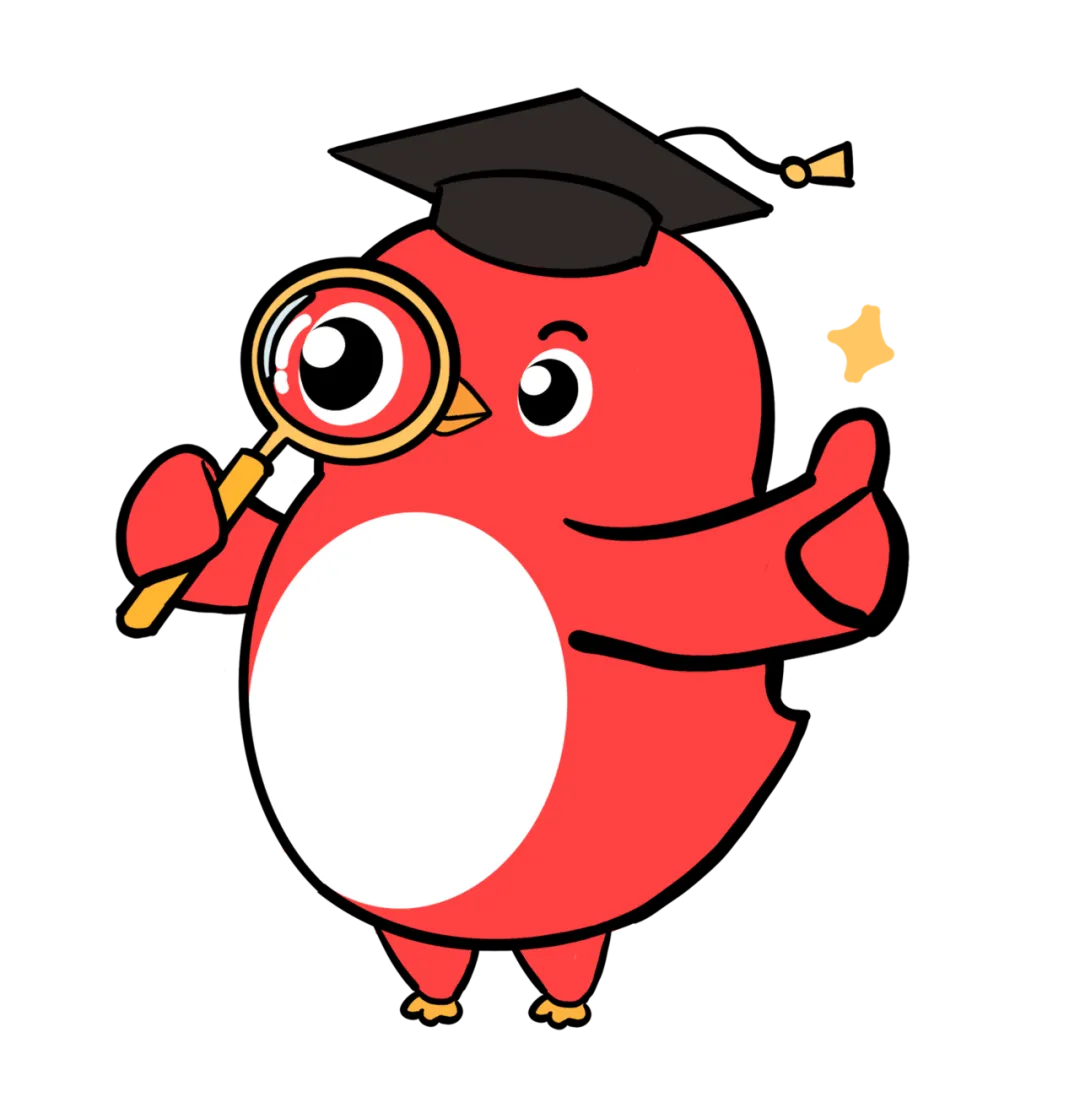Computer fundamentals are one of the public subjects that must be tested for the upgrade exam in some provinces. Most of the exam questions for computer fundamentals are multiple-choice and judgment questions. From the perspective of the exam questions themselves, the difficulty is not high, but there are many details that need to be memorized, and the knowledge points are scattered.
1. The symbolization of information is data, so data is the specific representation of information, and information is the logical meaning abstracted from data.
2. Information technology refers to the related technologies that people use to acquire, store, transmit, process, develop, and utilize information resources.
3. The core of culture is: concepts and values.
4. Computer culture is one of the four milestones in the development of human culture (the first three are: the emergence of language, the use of writing, and the invention of printing).
5. The characteristics of computers: 1) Fast computing speed 2) Large storage capacity 3) Strong versatility 4) Automation 5) High accuracy
6. Word length is the actual bit length that a computer can process at one time, and it is an important indicator of computing performance.
7. Word length refers to the number of bits of binary data that the computing unit can process simultaneously, which is closely related to the functions and uses of the computer.
8. Character encoding is mainly ASCII code, which stands for American Standard Code for Information Interchange.
9. When representing Chinese characters internally in a computer, the highest bit of the two bytes of the exchange code (national standard code) is changed to 1, which is called “internal code”.
10. There are usually two methods for recording the shapes of Chinese characters: dot matrix method and vector method, corresponding to two types of character encoding: dot matrix code and vector code.
11. A 16×16 dot matrix Chinese character occupies 32 bytes, while a 32×32 dot matrix character occupies 128 bytes, and dot matrix codes are difficult to scale and prone to distortion.
12. Chinese character input codes can be divided into four types: flow code, phonetic code, shape code, and combined phonetic and shape code. Pinyin input methods, such as intelligent ABC and Microsoft Pinyin, are phonetic codes, while Wubi input method is a shape code. Phonetic codes have many duplicates and slow input speed; shape codes have fewer duplicates and faster input speed, but are more difficult to learn and master. Currently, intelligent ABC, Microsoft Pinyin, Ziguang Pinyin input method, and Sogou input method are the mainstream Chinese character input methods.
13. The computer system consists of hardware and software systems, with software further divided into system software and application software, among which the operating system is the most important system software.
14. A computer that is not configured with any software is called bare metal.
15. Common input devices include: mouse, keyboard, scanner, digitizer, digital camera, barcode reader, digital camera, A/D converter, etc.
16. The controller and arithmetic unit are collectively referred to as the central processing unit (CPU). It is the core component of the computer.
17. The most commonly used output devices are monitors, printers, and speakers, as well as plotters and various analog-to-digital converters (D/A).
18. From the perspective of information input and output, disk drives and tape drives can be considered both input and output devices.
19. Instructions are commands that instruct the computer to perform a certain operation, consisting of a string of binary codes that include operation codes and address codes.
20. A computer has many instructions, each with different functions. The collection of all instructions is called the computer instruction system. Different computer systems have different instruction systems, and currently common instruction systems include complex instruction set computing (CISC) and reduced instruction set computing (RISC).
21. Software refers to the totality of programs, data, and related documents required for the operation of the computer. Data is the processing object of the program, and documents are materials related to the development, maintenance, and use of the program.
22. System software is the layer of software closest to the hardware in a computer system, mainly including operating systems, language processing programs, database management systems, and supporting service software.
23. An operating system (OS) is a collection of systematic programs that control and manage computer resources. It is the interface between users and the computer hardware system, providing a bridge for users and application software to access and control the computer hardware.
24. Algorithms: their main properties are: 1) Finiteness; 2) Determinacy; 3) Feasibility; 4) Input/Output.
25. The operating system is a large management control program that includes five management functions: processor management, storage management, device management, file management, and job management.
26. Operating systems can be classified based on their running environment into real-time operating systems, time-sharing operating systems, and batch processing operating systems.
27. Common database management systems include FoxPro, FoxBASE+, Access on microcomputers, and large database management systems such as Oracle, DB2, Sybase, SQL Server, etc., all of which are relational database management systems.
28. The basics of program design: data structure and algorithms are the two main aspects of programming; it can generally be considered that: program = algorithm + data structure.
29. Programming languages:
1) Machine language: the only language that computer systems can recognize without translation.
2) Assembly language: symbolic representation of machine language.
3) High-level languages: greatly improve programming efficiency.
30. Machine language and assembly language are generally referred to as low-level languages.
31. High-level languages can be divided into two categories: interpreted and compiled.
32. Interpreters: interpreters accept source programs written in a certain programming language (such as Basic), then interpret and execute each statement of the source program one by one, resulting in the final output. The interpreter translates the source program while executing it, without producing the target program.
33. Compilers: compilers are translation programs that translate source programs written in high-level languages into equivalent target programs expressed in machine language. This translation process is called compilation.
34. Microprocessors (CPUs) are ultra-large-scale integrated circuit chips that integrate the arithmetic unit, controller, and high-speed internal cache, and are the most important core components of computers.
35. Microcontrollers: integrating microprocessors (CPUs), a certain capacity of memory, and I/O interface circuits into one chip constitutes a microcontroller.
36. Single-board computers: integrating microprocessors, memory, and I/O interface circuits onto a single printed circuit board constitutes a single-board computer.
37. PCs (Personal Computers): microcomputers used by a single user are generally referred to as PCs, which are currently the most widely used type of microcomputer.
38. Portable microcomputers: portable microcomputers generally include laptops and personal digital assistants (PDAs).
39. The memory in microcomputers generally refers to random access memory (RAM). The unit of main frequency is Hertz (Hz).
40. Currently commonly used memories include SDRAM, DDR SDRAM, and DDR II SDRAM.
41. Floppy disks: with a diameter of 3.5 inches and a capacity of 1.44 MB.
42. Floppy disks have a write protection notch; when the write protection notch is in the protection state (i.e., the write protection notch is open), it can only read information from the disk and cannot write to it, which prevents data from being erased or rewritten and also prevents virus intrusion.
43. The bus in microcomputers is generally divided into data bus, address bus, and control bus, which are used to transmit data, data addresses, and control signals, respectively.
44. The motherboard is the largest circuit board in a microcomputer system, sometimes referred to as the main board or system board, and is a large printed circuit board with various sockets.
45. Computers with multimedia processing capabilities are called multimedia computers. Multimedia has the characteristics of diversity, real-time, interactivity, and integration.
46. The development of computers:
1) First generation (1946—1957) vacuum tube computers using machine language and assembly language for scientific computing.
2) Second generation (1958—1964) transistor computers using transistors and high-level programming languages for data processing.
3) Third generation (1965—1970) integrated circuit computers using medium and small-scale integrated circuits and high-level programming languages widely applied in various fields.
4) Fourth generation (1971—present) integrated circuit computers using integrated circuits and object-oriented high-level languages in the network era.
5) Fifth generation: future computers using photonic, quantum, DNA, etc.
47. Operating systems mainly have four characteristics: (1) concurrency (2) sharing (3) virtualization (4) asynchrony.
48. Concurrency refers to the simultaneous execution of two or more running programs within the same time interval.
49. The operating system is a concurrent system, and systems that adopt concurrent technology are also called multitasking systems.
50. File management mainly completes the following tasks: providing logical organization methods for files, providing physical organization methods for files, providing access methods for files, providing usage methods for files, implementing directory management for files, implementing access control for files, and implementing storage space for files.
51. Operating systems can generally be divided into three basic types: 1) batch processing systems; 2) time-sharing systems; 3) real-time systems.
52. With the development of computer science, many types of operating systems have emerged, mainly including embedded operating systems, personal operating systems, network operating systems, and distributed operating systems.
53. The working mode of batch processing operating systems is: users submit jobs to system operators, who compile many users’ jobs into a batch, then input them into the computer, forming an automatic continuous job flow within the system, and then start the operating system to automatically and sequentially execute each job, finally delivering the results back to the users.
54. The working mode of time-sharing operating systems is: a host connects several terminals, each terminal has a user, users interactively issue command requests to the system, which accepts each user’s command and processes service requests using time-slice rotation, displaying results to users on the terminal through interaction.
55. Real-time operating systems refer to those that allow computers to timely respond to external event requests and complete processing of those events within strict deadlines, coordinating all real-time devices and tasks to work in harmony.
56. Embedded operating systems run in embedded system environments, coordinating, scheduling, commanding, and controlling the entire embedded system and its various components.
57. Based on the number of users using the computer at the same time, operating systems can be divided into single-user operating systems and multi-user operating systems.
58. A single-user operating system means that at a given time, only one user can access the computer, enjoying all hardware and software resources alone; if multiple users can use the computer simultaneously, it is called a multi-user operating system.
59. If a user can run multiple applications (each application is called a task) at the same time, such an operating system is called a multitasking operating system; if a user can only run one application at a time, it is called a single-task operating system.
60. Early DOS operating systems were single-user single-task operating systems, while Windows 7 is a single-user multitasking operating system.
61. Network operating systems are based on computer networks and are software developed on various computer operating systems according to network architecture, protocols, and standards, including network management, communication, security, resource sharing, and various network applications, aiming for communication and resource sharing.
62. A large number of computers connected through networks can obtain extremely high computing power and extensive data sharing, which is called a distributed system.
63. MS-DOS has a character-based user interface, operated and managed through command lines, which is very inconvenient and requires users to memorize a large number of DOS commands.
64. The Unix operating system is a general-purpose, interactive time-sharing operating system.
65. The Mac OS operating system was launched by Apple Inc. and runs on Macintosh computers. Mac OS is the pioneer of fully graphical interfaces and operations.
66. Windows XP is currently most popular in its home and professional editions.
67. A shortcut is a file with an extension of .lnk, usually associated with an application or document.
68. The minimum system requirements for Windows are:
1) It is recommended that the computer use a clock frequency of 300 MHz or higher for the processor, at least 233 MHz (for single or dual-processor systems), preferably Intel Pentium/Celeron series, AMD K6/Athlon/Duron series, or compatible processors;
2) It is recommended to use 128 MB RAM or higher (minimum support 64 MB, which may affect performance and some functions);
3) 1.5 GB of available hard disk space;
4) Super VGA (800×600) or higher resolution video adapter and monitor;
5) CD-ROM or DVD drive;
6) Keyboard and Microsoft mouse or compatible pointing device.
69. Windows windows are highly unified in appearance, style, and operation.
1) Border (2) Title bar (3) Menu bar (4) Toolbar (5) Status bar (6) Document view (7) Scroll bar
70. Modal dialog box: refers to a type of dialog box that, when opened, disables the main program window, and only after closing this dialog box can the main window be processed.
71. Non-modal dialog box: refers to those dialog boxes that allow the main window to be processed even when the dialog box is displayed.
72. A file is defined as a collection of related information stored on external storage.
73. A file can store a program, an article, a piece of music, an image, etc.
74. Certain symbols such as /, \, *, ?, <, >, | are not allowed in file names.
75. The main file name should relate to the file’s content, with the extension used to distinguish the file type, hence the extension is also called the type name.
76. At any given moment, only one node can be in the open state, and when a node is in the open state, its name will turn blue, and some node icons will also change accordingly.
77. The excellent characteristics of Windows are attributed to the adoption of the advanced Unicode character set. The Unicode character set is a 16-bit character encoding standard developed by the Unicode Consortium.
78. The right side of the console lists user accounts on the computer; the Administrator and Guest accounts are automatically created when installing the Windows system, providing the possibility for initial management upon logging into the computer.
79. To prevent unauthorized users from attempting to log in as Administrator, the Administrator can be renamed, but the account cannot be deleted.
80. The Guest account can be disabled or renamed by the administrator for security reasons, but cannot be deleted.
81. The Paint program is a simple drawing tool that allows users to draw black and white or color graphics, save these graphics as bitmap files (.bmp files), print them, set them as desktop backgrounds, or paste them into other documents, and also view and edit scanned photos using Paint.
82. WordPad and Notepad are two text processing programs included with Windows 7, both providing basic text editing functions.
83. WordPad has stronger functions, allowing users to create and edit formatted files, with an interface and usage method very similar to Word.
84. Notepad is a text file editor that allows users to edit simple documents or create web pages. The use of Notepad is very simple, and the files it edits are text files, which greatly facilitates editing source programs of some high-level languages.
85. In the 1980s, widely used word processing systems included WPS, table editing software CCED, and document editing systems like Word Star.
86. Layout design is an important task that includes page settings, page numbers, column layout, header and footer settings, etc.
87. Microsoft Office consists of seven commonly used components for daily office tasks. They are: Word for word processing, Excel for spreadsheet processing, PowerPoint for presentations, Access for database management, InfoPath for dynamic forms, Outlook for email management, and Publisher for desktop publishing.
88. The title bar is located at the top of the window and is blue by default. It contains the application name, document name, and control buttons.
89. Methods to display or hide the toolbar:
Right-click on any position of the toolbar or tab, and select the desired toolbar from the pop-up shortcut menu.
90. The task pane can be called up through “Page Layout”—”Task Pane”.
91. The ruler has horizontal and vertical types, used to determine the position of documents on the screen and paper. The horizontal ruler can also be used to adjust paragraph indentation and margins, and tab stops can be set using the ruler.
92. The status bar is located at the bottom of the window, displaying the current status of the form, such as the current page number, section number, current page and total pages, cursor insertion point position, overwrite/insert status, and current language in use.
93. Common methods to start Word 2010 include:
1) Click “Start” → “Programs” → “Microsoft Office” → “Microsoft Office Word 2010”.
2) Double-click the Word shortcut icon established on the desktop.
3) Double-click an established Word document.
94. Common methods to exit Word 2010 include:
1) Click the “Close” button in the upper right corner of the Word window.
2) Click the “Exit” command in the “File” menu.
3) Double-click the control icon in the upper left corner of the Word window or use the shortcut key Alt+F4.
95. Click the “Options” command in the “Tools” menu, and in the pop-up dialog box, click the “Save” tab, check the “Automatic save interval” checkbox, and set the automatic save time interval, so you can edit your work without worry.
96. Open Document:
1) Click the “Open” command in the “File” tab.
2) Click the “Open” tool button on the common toolbar.
3) Use the Ctrl+O shortcut key.
4) Click one of the last four documents usually listed under the “File” tab (to set the number of documents listed under the “File” menu, select the “Options” command in the “Tools” menu, and click the “General” tab in the dialog box).
97. Create a new blank document: (1) Directly click the “New” button on the common toolbar. (2) Use the shortcut key Ctrl+N.
98. Close Document:
(1) Click the “Close” command in the “File” menu to close the currently edited document.
(2) Click the “Close” button in the upper right corner of the document window to close the currently edited document.
99. Use keyboard commands or shortcuts: pressing the Home and End keys can quickly move the insertion point to the beginning or end of the document; pressing Ctrl+Home and Ctrl+End can quickly move the insertion point to the beginning and end of the document.
100. Word provides two input states: “Insert” and “Overwrite”. The “Insert” state means that the text typed will be inserted at the current cursor position, pushing the text behind it in order; the “Overwrite” state means that the text typed will overwrite the text following the cursor in order.

Part.
01
Upgrade English Vocabulary Training Camp
Part.
02
Upgrade Grammar Training Camp


Part.
03
Upgrade Reading and Writing Training Camp

Huateng New Thinking
Scientific Guidance for Upgrade Exams
 Huateng New Thinking Branch Addresses
Huateng New Thinking Branch Addresses
htxszsb
1
Hebei
[Shijiazhuang] 20-2006-2007 Hongqi Street, Qiaoxi District, Shijiazhuang City, Hebei Province; [Gaocheng] No. 4, Xishun North Street, Gaocheng District, Shijiazhuang City, Hebei Province
[Tangshan] Tangshan City, Caofeidian District, University Town Express Street, Tel: 17692400507
2
Liaoning
[Shenyang] Room 310, 3rd Floor, Morning News Technology Industrial Park, Shenyang City, Shenyang North New District, Tel: 18204141471
3
Guangdong
[Guangzhou] 94 Tianyuan Road, Tianhe District, Guangzhou, Guangdong Province
Tel: 18719201480
4
Guangxi
[Nanning] Building A, No. 1, Anji Wal Street, Xixiangtang District, Nanning City
Tel: 19116898446

Recommended Reading
○ The 25-year national upgrade exam is about to start, with a comprehensive review of the written subjects in various provinces!
○ If you want to enter a public university for the upgrade exam, you need to prepare in these four areas!
○ The names “correspondence” and “part-time” will be discontinued, and major changes are coming to adult higher education!
○ Is there a “hard stop” on the enrollment plan for the national upgrade exam? What is the reason behind it?
○ If you do this for three years in college, upgrading is not a dream!
○ Six essential differences between national upgrade exams and regular undergraduate degrees.